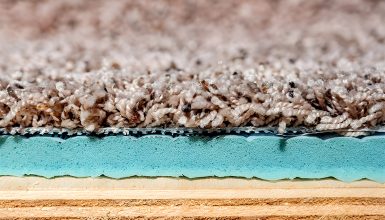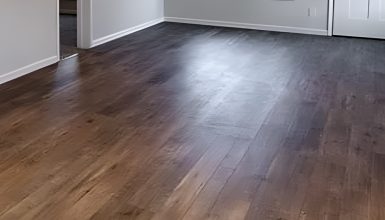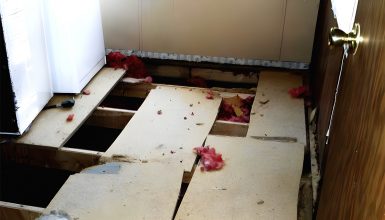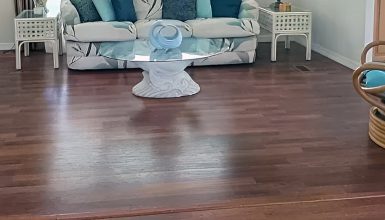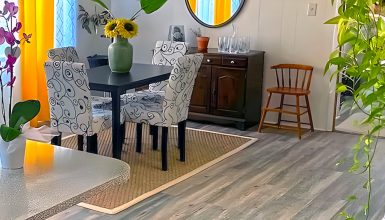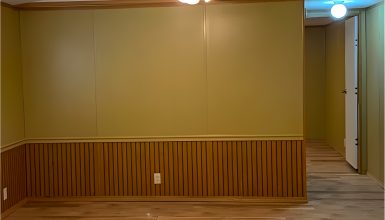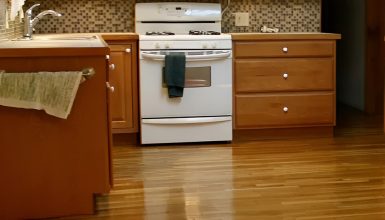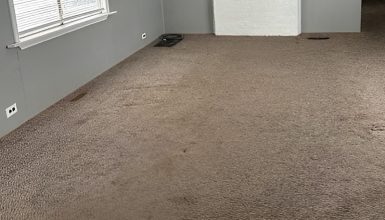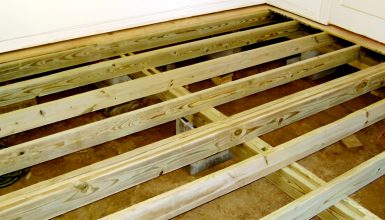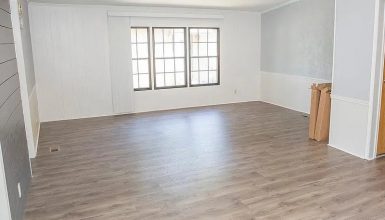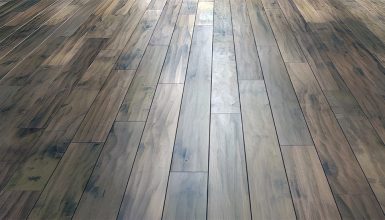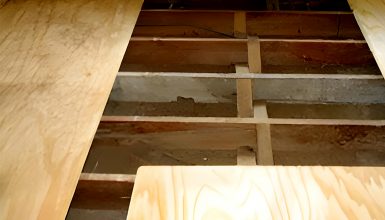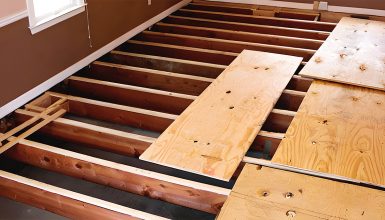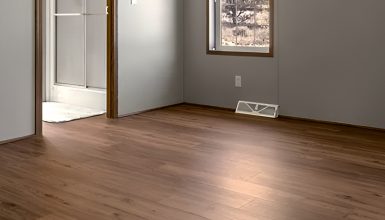Insulating your mobile home floor isn’t just about comfort but also efficiency. It helps your heating and cooling systems work less, saving you money on energy bills. It’s the step that makes your mobile home more sustainable and budget-friendly. Choosing the right type and correctly installing it is a game-changer, and we’re here to guide you through it. Let’s dive in!
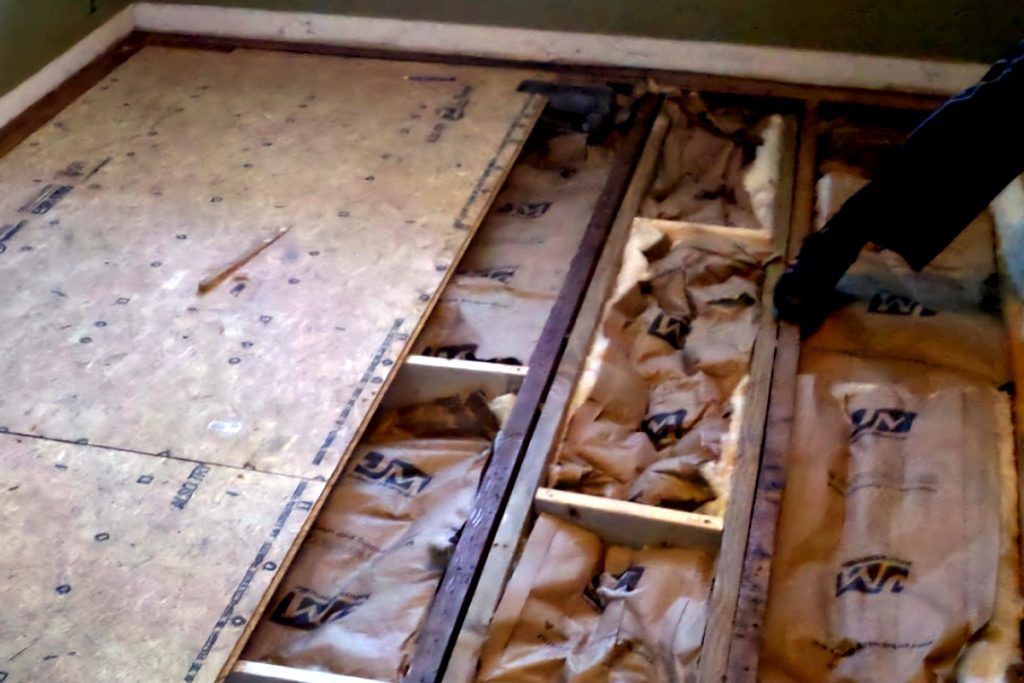
What Is Insulation
Let’s break it down to the basics. Insulation, what is it? Imagine sipping your favorite hot cocoa on a frosty winter’s day. You wrap your hands around that warm mug, and it’s like a mini furnace in your palms. But wait, it’s not scalding you. Why? The secret is the mug—it’s insulated. Your hot drink stays toasty, and your hands get warmth without the burn. That’s insulation at work.
Now, just scale that concept up to your mobile home. Insulation is the stuff that keeps the warmth in and the cold out, or vice versa, depending on the season. It’s like your home’s bodyguard against extreme temperatures, working round-the-clock to ensure your comfort.
Insulation comes in many forms. It could be thick, fluffy fiberglass batts that look like cotton candy (but don’t taste like it, trust me) or rigid, dense, sturdy foam boards. There’s spray foam that expands to fill gaps and reflective foil that bounces back the heat like a mirror.
One key term in the insulation world is “R-value.” Think of it as the report card of insulation—the higher the R-value, the better the insulation’s performance. It measures how well the material resists heat flow. So, the thicker the insulation or, the higher the R-value, the better your home’s equipped to handle temperature swings.
Why Insulating Mobile Home Floors Is Crucial
So we know insulation is critical. But why is the floor so crucial? Picture your mobile home like a big, cozy box. Sure, you’ve got walls and a roof, but everything begins with the floor. It’s the base of your mobile haven, the first line of defense against what’s underfoot.
Heat loves a game of hide and seek. It’s always on the move. And where does it often escape? You guessed it—right through the floor. In the winter, your warm, cozy air slips out while the cold drafts sneak in. Reverse the scenario in the summer, and you’ve got your cool air fleeing and heat staging a full-on invasion. Insulating your floor keeps this game of tag in check.
Another thing to remember is your mobile home’s proximity to the ground. Mobile homes are closer to the earth than traditional ones with basements or crawl spaces. That means moisture from the soil, cold from the frosty ground, and heat from sun-baked earth—they all take a direct shot at your floor—the insulation steps in like a buffer, minimizing these impacts.
And hey, who doesn’t love a little peace? Floor insulation can also reduce noise from outside. So, whether it’s the patter of rain or the rustle of wind, insulation can help keep things hushed and serene.
Best Insulation Options for Mobile Home Floors
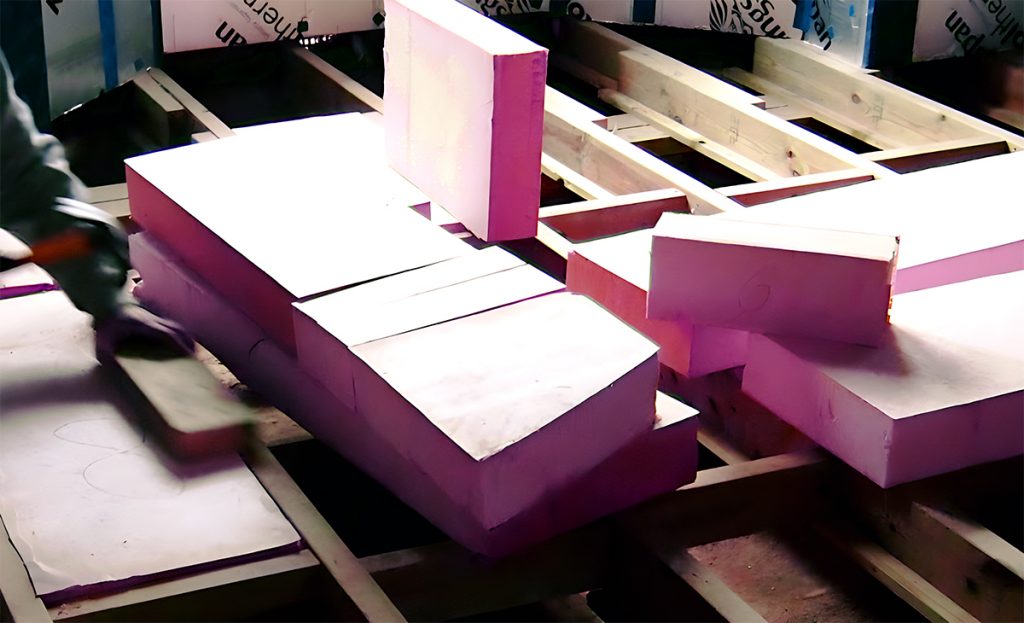
Now that we know the why, it’s time for the fun part—exploring the insulation options for your mobile home floor. Exciting, right? So, let’s roll up our sleeves and get into it!
1. Fiberglass Insulation
Let’s start with fiberglass. It is the old-school favorite, the classic. You’ve probably seen those fluffy pink rolls. Pros? It’s a cost-effective and widely available option, costing between $0.50 and $1.00 per square foot. It also offers good insulation and comes with different R-values. You can choose based on your needs.
But remember, fiberglass is like a sponge for moisture. If it gets wet, it can lose its insulating capabilities. It also requires careful handling. You don’t want those tiny glass fibers irritating your skin or lungs. Always wear safety gear if you’re installing it yourself.
2. Spray Foam Insulation
Next up, spray foam. Think of it like whipped cream from a can, filling up every nook and cranny. It expands and hardens, creating a tight seal. Great for preventing air leaks, plus it has high R-values. And it also adds structural stability to your home.
But the cons? It’s expensive, costing anywhere from $1.00 to $2.00 per square foot for open-cell foam and $1.50 to $3.00 for closed-cell foam. It also requires professional installation. You can’t just DIY this one over the weekend. It’s a bit of an investment, but the benefits outweigh the cost for some.
3. Rigid Foam Insulation
Then we have rigid foam insulation. Think of it like a firm, dense cake—it’s solid and holds its shape. It’s easy to install, has high R-values, and doesn’t soak up moisture like fiberglass.
But on the flip side, it’s pricier than fiberglass. It costs between $0.70 and $1.20 per square foot. Also, cutting it to fit can be a task, and you’ll need to cover it with a fire barrier. But this might be it if you’re looking for a moisture-resistant option.
4. Reflective Insulation
Finally, let’s talk about reflective insulation. It’s like a shiny superhero cape for your home. It bounces back the heat, keeping your home cooler in the summer. It’s lightweight, easy to install, and great for hot climates. It’s also affordable, around $0.50 to $1.00 per square foot.
The downside? It doesn’t provide as much insulation in colder climates. And, you need to install it correctly—with an air space—for it to work its magic.
5. Other Types of Insulation
There are other insulation options, like mineral wool or cellulose. But these are less common for mobile homes due to their weight and potential moisture issues.
The key is to balance the pros and cons against your needs. Your climate, budget, and mobile home specifics all play a part. There’s no one-size-fits-all. It’s about finding the right fit.
Mobile Home Floor Insulation Thickness
Just like your favorite slice of pie, the thickness of insulation matters—it’s what traps the heat and keeps you cozy. In the insulation world, this thickness is closely related to its R-value, remember? The higher the R-value, the thicker the insulation, and the better it comforts your home.
So, how thick is the insulation in a mobile home floor? Well, it can vary. It often depends on the space between your floor and the underside of your home and what R-value you aim for.
Typically, the insulation might be between 3 to 6 inches thick for a mobile home floor. For instance, a fiberglass batt about 3.5 inches thick has an R-value of around R-11, which might suit milder climates. But, if you’re bracing for harsher winters, you may opt for a thicker 6-inch batt, boasting an R-value of R-19 or even higher.
Factors to Consider When Choosing Insulation for Mobile Home Floors
So, now you know your options. But how do you make a choice? Like picking out the perfect pair of shoes, there are a few things you need to consider to find your best insulation fit.
- Climate and Weather
First off, think about where you live. Is it the sunny beaches of Florida or the frosty mountains of Colorado? Your local climate is like the runway your home’s strutting on. It sets the stage for your insulation needs.
Reflective insulation might be your best friend in a hot climate. It sends the sun’s heat right back where it came from. For cold temperatures, think of high R-values. Fiberglass, spray foam, or rigid foam might be the winners. And for damp conditions? Go for something that resists moisture, like rigid foam.
- Home Construction and Materials
Next, consider the unique characteristics of your mobile home. What’s the flooring material? How much space is there for insulation? Is there any existing insulation? Just like you wouldn’t squeeze your foot into an ill-fitting shoe, you want insulation that matches your home’s specifics.
- Budget and Cost-Effectiveness
Now, let’s talk budget. We all know that money doesn’t grow on trees. The cost is a significant factor. Fiberglass might be lighter on your wallet upfront, but spray foam, while pricier, could save you energy costs over time. It’s all about weighing the initial costs against the long-term savings.
- Environmental Impact
And let’s not forget about Mother Earth. The environmental impact is worth considering. Some insulation materials have more eco-friendly manufacturing processes than others. Some last longer, reducing the need for replacement. It’s about making a choice that comforts your home and takes care of our planet.
Choosing the proper insulation might seem like a daunting task. But armed with these considerations, you’re ready to make an informed decision. Your comfort, wallet, and planet will thank you. Up next, we’ll delve into the installation process. Ready to roll up your sleeves? Let’s get to it!
How to Install Floor Insulation in Mobile Homes
Let’s get down to the nuts and bolts—installing your floor insulation. It’s like piecing together a puzzle or baking your favorite cake. Follow the recipe step-by-step, and you’ll get it right. Here’s a general guide to get you started.
Step 1: Preparation
Start by giving your underfloor area a good, clean sweep. Remove any debris or old insulation. It’s like preheating your oven—laying the groundwork for what’s to come.
Step 2: Measure
Now, grab your tape measure. You’ll need to know exactly how much insulation you will need. Measure the distance between the floor joists and the length and width of your insulating area. Remember the golden rule—measure twice, cut once!
Step 3: Cut the Insulation
Based on your measurements, cut your insulation to the correct size. If you’re using fiberglass or rigid foam, use a sharp utility knife and make sure your cuts are clean and even.
Step 4: Install the Insulation
Next, it’s time to tuck that insulation between the floor joists. The fit should be snug but not jammed in. Like fitting your foot into that perfect shoe, it should be just right—not too tight or loose.
Step 5: Secure the Insulation
Hold your insulation in place. You can use insulation hangers or wooden lathes. Just ensure it’s secure and won’t shift around.
Step 6: Seal the Edges
For that extra protection, seal the edges of the insulation with acoustical sealant or spray foam. It helps prevent any drafts from sneaking through.
Step 7: Add a Moisture Barrier
Finally, if your insulation doesn’t already have a vapor barrier, add one. It keeps moisture from creeping in and dampening your insulation party.
And there you have it—a warmer, cozier mobile home! Remember, always take safety precautions. Gloves, goggles, and a mask are a must when handling insulation.
Conclusion
Phew, that was quite the deep dive into the world of mobile home floor insulation, wasn’t it? But don’t feel overwhelmed. You’re now armed with the knowledge to make the best insulation choice for your cozy mobile abode. Whether you choose, remember it’s about finding the best fit for your unique home, climate, and budget. Of course, always put safety first, whether DIY-ing or bringing in the pros. Insulation is a long-term investment; proper installation is vital to reaping its benefits.

